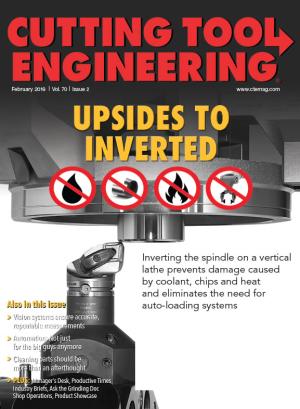Last year’s January issue included an article I wrote about the James Webb Space Telescope and how its 18 gold-coated beryllium primary mirror segments were machined. It made sense to me at the time that the best way to study the cosmos and capture the earliest light of the universe was to place a telescope outside Earth’s distorting atmosphere. The Hubble Space Telescope takes this approach, and the James Webb, which is scheduled to launch in spring 2019, will have nearly three times higher resolution in the infrared than the Hubble.
My conviction changed after the Giant Magellan Telescope Organization Corp. reached out to me to explain how it is working with Boeing Research & Technology to minimize the deflection of light just before it reaches the Earth-bound Giant Magellan Telescope (GMT). That light might have traveled 13.5 billion years. While photons moving at light speed wouldn’t age during their entire trek, an overly damaged ancient light beam isn’t of much value to astronomers. (Read my report here.)
The GMT is one of a new generation of ground-based, extremely large telescopes. It is poised to be the first to begin operations, with a first-light target date of 2023. A marvel of manufacturing, particularly the grinding of the mirrors, the telescope will be assembled in Chile at an elevation of 8,200' (2,500m). The James Webb, positioned at more than 932,000 miles (1.5 million km) away from Earth, may be closer to the stars, but the GMT, with its seven 27'-dia. (8.2m) primary mirrors, has 10 times the collecting area of the Webb. According to Patrick McCarthy, vice president for operations and external relations at Giant Magellan Corp., Pasadena, Calif., the adaptive optics on the GMT sharpen images by a factor of about four compared to the Webb.
“The things that the James Webb Space Telescope will do, it will do spectacularly well, and the things that the GMT will do, it also will do spectacularly well,” McCarthy said. “Together, the two will work in a really synergistic way.”
Making the GMT mirrors at the University of Arizona’s Richard F. Caris Mirror Laboratory to achieve those spectacular results isn’t a run-of-the-mill grinding job. McCarthy said the mirrors are made of borosilicate glass, and large grinding wheels with diamonds embedded in a metal matrix are aggressively applied when roughing. The glass behind the front surface, which is polished to impart a 20nm-rms finish, is structured to be both rigid and 85 percent lighter than a solid mirror. “We achieve that by melting the glass in a mold that is mostly empty space,” he said, “cleaning out the mold material so we have, in essence, a honeycomb sandwich.”
I agree with McCarthy that it’s remarkable and profound that the universe is transparent, enabling mankind, as technology progresses, to see almost to the Big Bang—or whatever happened some 13.6 billion years ago.
“You can look out into the sky and, even with your naked eye, you can see things that are 3 million light years away. With a small telescope, you can see much farther,” McCarthy said. “But with the big telescope, you can see all the way across the universe.”
Related Glossary Terms
- grinding
grinding
Machining operation in which material is removed from the workpiece by a powered abrasive wheel, stone, belt, paste, sheet, compound, slurry, etc. Takes various forms: surface grinding (creates flat and/or squared surfaces); cylindrical grinding (for external cylindrical and tapered shapes, fillets, undercuts, etc.); centerless grinding; chamfering; thread and form grinding; tool and cutter grinding; offhand grinding; lapping and polishing (grinding with extremely fine grits to create ultrasmooth surfaces); honing; and disc grinding.


